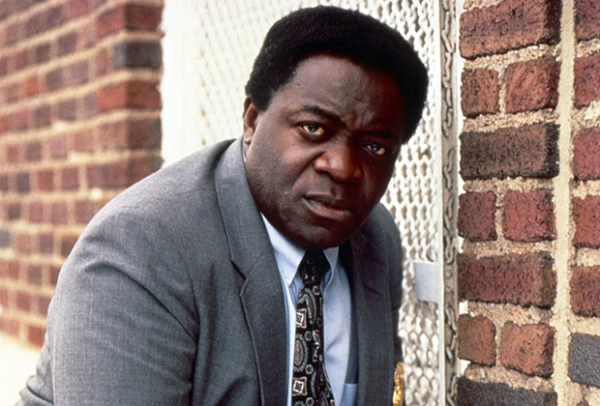WHEN MICROSOFT CEO BILL GATES sat down with Reed Hundt, chairman of the Federal Communications Commission, to chat about digital television last May, broadcasters and television manufacturers began to get a fast education on life in the digital world. For nine long years they’d been laboring to construct standards for digital broadcasting, a technology that would bring the wonders of cinematic video to the living room and persuade millions of consumers to buy expensive new sets. Finally, after rigorous testing that had consumed more than $500 million, they were within sight of their goal—the blessing of the FCC and the doling out of invaluable broadcast licenses for digital TV. Then Gates turned up with a delegation of computer geeks and ruined everything.
Gates and his allies—Intel, Compaq, Apple, and DreamWorks SKG among them—had a big problem with a small part of what the broadcasters wanted: an FCC-imposed format for scanning video onto a screen that wouldn’t work on personal computers. To make PCs compatible with this scanning technique would add as much as $500 to the cost of each machine. The FCC, unwilling to alienate one of the nation’s most rapidly growing and lucrative industries, sent everybody to the negotiating table.
This time it didn’t take nine years to agree on a plan. Two days before Thanksgiving, after six months of chaos and weeks of late-night negotiating sessions, the TV people finally abandoned their long-held insistence on a government-mandated video standard. Suddenly the PC and the TV were set to converge—on the computer industry’s terms. “Maybe,” says Carl Yankowski, president of Sony Electronics, “we should redefine convergence as collision.”

Yaphet Kotto of “Homicide.” Photo ©NBC/Courtesy Everett Collection
JUST 40 MILES TO THE NORTHEAST, on the Baltimore pier that serves as the set for NBC’s Emmy-winning crime drama Homicide, convergence was already under way. Even as the negotiators were slugging it out in Washington, a blond but hardly sunny young actor named Reed Diamond, who plays Detective Mike Kellerman on Homicide, found himself acting in a medium he’s never even seen—NBC Interactive, which uses both the World Wide Web and an experimental technology called Intercast to give the show a dimension television doesn’t allow. NBC Interactive ushers audiences backstage, introducing them to the set person who (for reasons best known to himself) likes to put a potato in every scene or to actor Yaphet Kotto, who says the interrogation box reminds him of his time as a prisoner of war in Vietnam. Which is how Diamond came to be in a cold, dingy room, in character but without a script, being interviewed by NBC Interactive reporter Ayelet Sela.
“A cop’s job is not to solve the crime or to see that justice is served,” he told her flatly. “A detective’s job is to close the case.”
For Sela, this interview was one of many: Waiting outside in the hall with case files from a 1982 serial murder investigation was Baltimore Police Captain Gary D’Addario, whose work as a homicide shift commander inspired Kotto’s character. For NBC, the effort is part of a major push into the interactive world, which senior executives see as the next high-growth frontier after cable and the international market. Yet they know they’ve ventured into a realm where there are no precedents and no rules and there is barely any way to predict what will work and what won’t. “It’s true pioneering,” boasts Edmond Sanctis, executive producer of NBC Interactive. “We’re peeing in our pants every day,” another Interactive team member confides. “It’s just like the Forties, when television was starting out live.”
What they’re describing is the shock of convergence. Suddenly, in a sputtering, ad-hoc way, the boob tube we were weaned on is being jacked into the PC and reinvented as a two-way device. It’s beginning to look like 1948 all over again, and the question is, will a new Uncle Miltie—the off-the-wall vaudeville performer whose Texaco Star Theater was so big people rushed out to buy television sets just to see it—turn up for the sendoff?
“It comes down to the question of how you marry the computer nerd with the couch potato. Or the Intel chip with the Frito chip.”
Maybe, as one NBC exec puns, Homicide will become the killer app—the online experience that turns out to be Texaco Star Theater and Lotus 1-2-3 all in one. (Probably not.) Maybe the killer app will be NFL football, another NBC Interactive offering, with its legions of stat-hungry fans. (Perhaps.) Or maybe it will be something the media have no say in, like e-mail on your TV set—not old-fashioned hunt-and-peck keyboard e-mail but the streaming-video kind, where you haul out the camcorder and catch the kids being cute and flash the clip over to your folks with a click of the remote. (Even more likely.) In any case, the prospect of the computer and the television becoming one has energized not just NBC (and its parent, General Electric) but Viacom, Time Warner, Philips, Sony, Intel, Microsoft, and a host of other corporations—not to mention high-powered Silicon Valley startups like WebTV Networks, which has made a hot debut this Christmas with a $350 gizmo that takes your television set online.
What’s in the offing is a three-way free-for-all in which media giants, consumer electronics companies, and the titans of the PC industry forge alliances of convenience—as in the negotiations just concluded in Washington—as they maneuver to protect franchises they’ve built up over decades. Will families want to watch TV on big-screen home computers laden with Intel chips and Microsoft software? Or would they rather surf the Internet on their Trinitrons with the help of a WebTV set-top box from Sony or Magnavox? And what happens to NBC or CNN when the 60 or 70 channels currently available on cable morph into a million or more on the World Wide Web? Even now the networks continue to hemorrhage viewers: NBC came in first last season with a Nielsen rating of 11.7—a 40% drop from the numbers CBS enjoyed when it was on top 20 years before. Throw personal computers into the mix and you have the potential for a ratings meltdown: A recent survey by Emerging Technologies Research Group of New York City indicates that 32% of people who get Internet access watch less television than before. At this rate, one wonders how much longer they’ll be able to call it broadcasting.
“TV,” SAYS BOB MEYERS, senior vice president of NBC Interactive, “is a really dumb device.” He means dumb in the communicative sense—a one-way viewing apparatus that demands passive reception. Fifty years ago, when Meyers was not yet born and NBC was pioneering commercial broadcasts in the Rockefeller Center office tower where he works today, television was the marvel of the ether, but that was before personal computers and videogames and the World Wide Web. “The idea that ten years from now people are going to be comfortable sitting in front of a television set—my instinct and our focus groups tell me they’re not,” Meyers says. “My little focus group at home sure isn’t—they expect a TV to act like a PC.”
If the interactive television trials that Time Warner (owner of Fortune‘s parent), Bell Atlantic, and other companies ran recently had worked out, television might be acting like a PC already. They didn’t, partly because they required enormous investments in infrastructure, partly because nobody really knew what interactive TV would be good for—video on demand, home shopping, and then what? “A lot of interactive TV schemes required you to dig up most of the country before you realized what people were going to do with it,” says Mariah Scott, an Intel marketing manager. So interactive television stalled—even as millions of people were joining America Online or signing up with Internet service providers.
Some of the technology behind convergence—software that allows video to run on a computer screen, for instance—has actually been around for years. At the same time, the biggest barrier to interactive television—the lack of a conduit into the home with enough bandwidth to carry vast streams of digital data back and forth—remains nearly as intractable as ever. So why are the two media converging now? Partly it’s because microprocessors have grown so powerful and memory chips so inexpensive; partly because so many people now have a personal computer at home; partly because, with the explosion of the Internet, so much digital information is now available. And even with the poky modems you can buy today, the Internet has defined interactivity and made it real in a way that interactive television never could.
Then there’s the power of planned obsolescence. Sixteen months ago it was Windows 95 and Intel’s Pentium processor; now it’s big-screen PCs and the Internet in your living room. Ditto on the consumer electronics side: “The average number of TV sets in the American home is 3.4,” says Sony’s Yankowski, 48, a tall, friendly fellow with a startling tendency to pull small gadgets out of his suit. “How do we add new value so you’ll want to buy a new one?”
Eventually we’ll end up with something not unlike interactive television as it was first envisioned. “The progression is pretty obvious,” says Craig Mundie, Microsoft’s senior vice president for consumer platforms. “It’s only a question of time before we put in enough bandwidth to evolve back to that.” Meanwhile—as NBC realized when it broadcast Web addresses during last summer’s Olympics and got an instantaneous surge of hits—consumers have already begun putting home computers and television sets in the same room. Call it the first stage of convergence.
SIDE-BY-SIDE WAS ESSENTIALLY THE APPROACH taken by Microsoft and NBC when they joined forces to launch MSNBC, their online-and-cable service. “The whole point was to establish a brand name early and be the leaders in a converged computer-television-video world,” says Thomas Rogers, 42, NBC’s executive vice president in charge of cable and new-business development. This was a point NBC had failed to grasp some 15 years before, when Ted Turner (now vice chairman of Time Warner) started his Cable News Network while the broadcasting establishment snickered. In 1989, Rogers finally led NBC into cable with CNBC, rushing it out before major distribution windows slammed shut. Even then the prevailing attitude at NBC was, as he puts it, “Does anybody really watch this stuff?”
NBC now seems determined not to repeat that blunder online. Even before partnering with Microsoft, the network went online with NBC Desktop Video, which delivers 24-hour live coverage to computer screens (on the theory that Wall Street types don’t keep television sets in their offices). Thanks to Desktop Video, which has 27,000 subscribers at 1,400 sites, NBC now leads the market in news piped live into the financial sector. Then came MSNBC, “the first great marriage of the convergence era,” Rogers calls it. (As part of the dowry, Microsoft got half-ownership of Desktop Video.) Now there’s NBC Interactive, which includes both the NBC.com Website and Intercast.
Intercast relies on an underutilized asset—the vertical blanking interval, a portion of the broadcasting signal that’s typically used for closed-captioning. And as with MSNBC, Intercast is the offspring of a liaison with a technology leader—Intel, which developed hardware and software to decode signals on the vertical blanking interval. NBC had long been enthusiastic about the vertical blanking interval’s potential—”It reaches everyone! It’s a great signal!” cries Martin Yudkovitz, president of NBC Interactive—and when Intel started developing Intercast, the network was ready.
For Intel, Intercast is part of a make-or-break effort to take functionality—and demand—to the next level. It costs $2 billion to build a chip plant today, but Intel is looking at $10 billion plants on the near horizon, and they’ll have to run full tilt if the company is to make big money. Avram Miller, vice president for business development, seized upon full-motion video transmitted over the vertical blanking interval as a way to help justify the manufacturing investment in Intel’s next-generation P7 microprocessor. “Where do you go beyond the Pentium?” says a source close to Intel. “You can run any spreadsheet, you can run any word processor, you can get online—what more do we need? And the answer is, you always think of something.”
Unfortunately, Intercast has the look of a product designed to meet corporate needs rather than consumers’. Even NBC executives concede that it’s an interim technology at best. Because it’s a broadcast, it’s not even truly interactive: It gives you data that look like Web pages, but it doesn’t actually put you on the Web. It’s also clunky, requiring you to watch TV on a desktop computer—okay for one person, but not for the family—or else on a big-screen PC using a remote “air mouse” that’s tricky even for the Intel demo team. On the other hand, it’s here. “As I say to the guys at Intel, ultimately it comes down to a question of how you marry the computer nerd with the couch potato,” says Tom Rogers. “Or put in terms of that company, how do you marry the Intel chip with the Frito chip? This will point the way.”
“This is hilarious. Campbell Soup is on the Web, and there’s not a single person I know who’s the least bit interested.”
NBC isn’t alone in the lab: Intel has formed an Intercast Industry Group that includes four other content providers—CNN, QVC, Viacom’s MTV unit, and WGBH, the Boston public broadcasting station—and such computer manufacturers as AST Research, Compaq, Gateway 2000, and Packard Bell. “It’s kind of like herding cats,” admits Mariah Scott, who heads the group. CNN and QVC have been sending out an Intercast signal 24 hours a day since June; WGBH and MTV are experimenting with some of their own programming. Other content providers will be able to use the technology later, but the first five got early access in exchange for their help in getting Intercast started.
Manufacturers have been slower to act: Compaq, which bundled an Intercast card with its Presario line for a short-lived summer promotion, hasn’t yet made it permanent. And while Intercast may be available in Sony’s new PC early next year, the best way to get it at the moment is probably to buy a screwdriver and a $150 upgrade card from Hauppauge Computer Works, a Long Island, New York, circuitboard vendor, and install it yourself. By late November, a few thousand people had done so.
The audience for NBC.com, on the other hand, is far larger: Last summer the network’s Olympics Website got 7.3 million hits in one day. Maybe this explains why the real excitement at NBC seems to be for WebTV, which runs on television yet connects you with the Web. “Tom wants one, Marty wants one, and I want one,” says Desktop Video President Mike Wheeler, referring to his boss, Tom Rogers, and Marty Yudkovitz of Interactive. “But the Sony store can’t keep ’em in!”
A VISIT TO SONY STYLE a couple of blocks away on Madison Avenue confirms his report. “Young people, old people—they come in to look and then they walk out with it,” says salesman Muhammad Shaikh of Sony’s WebTV set-top box, a sleek little number that automatically configures itself to dial up the World Wide Web and send and deliver E-mail. Licensed to Sony and Philips—whose larger, heftier unit is designed to appeal to middle America—WebTV consists of the box (list price: $349 and $329, respectively, with remote) and network access ($19.95 per month); a remote keyboard (about $70) is optional but hard to live without if you want to compose E-mail. This is the consumer electronics approach to convergence—something you buy at Circuit City, not CompUSA, and don’t need a computer science degree to install. “Computers make you feel dumb,” says a spokeswoman for WebTV Networks. “You really don’t want your television to make you feel dumb.”
Not that computers have ever made Steve Perlman, WebTV’s 35-year-old inventor, feel dumb. A Columbia University grad who’s been designing computer graphics systems since he was 17, Perlman was a technology wiz at Apple Computer and then at General Magic. He’d taken off to write a novel when he stumbled across the Campbell Soup Website: Andy Warhol meets Fannie Farmer in cyberspace. “I was thinking, this is hilarious,” he recalls. “Campbell Soup is on the Web, and there’s not a single person I know who’s the least bit interested.” Then he realized that with a little image processing, he could get the site to look good on a TV set, where Campbell’s soup lovers might actually find it. Three sleepless nights later he had Campbellsoup.com on his TV in living color. At 2 a.m. he called Bruce Leak, a former Apple colleague, who drove down from San Francisco, looked at it, and said, “Let’s start a company.” When the sun came up, Perlman phoned his patent attorney.
Sharp-featured and round-faced, with slicked-back hair that makes him look more like a car salesman than a computer nerd, Perlman is now CEO of a company whose backers include Marvin Davis, Paul Allen’s Vulcan Ventures, Microsoft, and Bill Gates personally. Other companies are also working the Internet-on-TV angle, notably Diba, a Menlo Park, California, startup whose technology is behind Web-enabled TVs that will soon be coming from Zenith and Samsung. Apple has licensed a stripped-down Macintosh called Pippin to Bandai, the Japanese entertainment giant behind the Mighty Morphin Power Rangers; Bandai came out with a model last spring that plugs into a TV and puts Japanese customers on the Internet. But at the moment, only WebTV is in the stores in America.
What’s remarkable about these efforts is the attitude they reflect: For the first time, Silicon Valley sounds serious about developing easy-to-use, single-purpose devices and is turning to consumer electronics companies—long derided for their low-end ways—to manufacture them. The dawning realization is that most consumers find PCs too complicated. “When you say Hewlett-Packard or IBM, people’s palms get sweaty,” says Joe Gillach, marketing chief at Diba.
Cost is a factor too: Intel chips command a premium because they’re compatible with generations of Microsoft operating systems—but so what? “If you can discard the overhead of the Wintel platform, you can focus more computing power on ease of use,” says Jeff Brody, a venture capitalist on WebTV’s board.
Consumer electronics companies, eager to keep pace as the world goes digital, are only too happy to oblige. Yankowski, who describes himself as “a pragmatic combination of a tech weenie and a marketeer,” sees WebTV as setting the direction for the convergence strategy Sony adopted 22 years ago. His view might have something to do with poll results: With only 10% of U.S. households now online, a Yankelovich survey conducted this fall for WebTV indicated that more than half the remainder would rather get the Net on television than on computer. Coincidentally, in a Louis Harris poll last spring, Sony emerged as America’s best-known brand—over GE, Ford, and everyone else. Microsoft was mentioned by a mere 1% of respondents; Intel, not at all.
NONE OF THIS IS TAKEN LIGHTLY in Santa Clara, California, or Redmond, Washington. “I think WebTV is cool,” says Mike Aymar, general manager of Intel’s desktop products group in Santa Clara. “It has limitations, obviously”—no data storage, for example—”but it’s going to get some people who might not want to spend $1,500 for a PC. I think it will either nudge them toward a more complete experience or turn them off.”
In Redmond, Microsoft’s Craig Mundie questions whether WebTV can be considered a true convergence product at all. A convergence product, in his view, is one that combines TV reception with all the functionality of a PC—and by the way, runs on Windows. Still, part of his job is to adapt Windows and Internet Explorer for “sub-PC products” like WebTV. At last month’s Comdex, a computer industry show, his group introduced Windows CE, a lite operating system that runs on hand-held computers and is now being adapted for even smaller, single-purpose devices—digital telephones and CD players and whatnot. “We believe we can create a more friendly, well-integrated environment for consumers,” he says, “as opposed to seven different environments and seven different interfaces.” Translation: Watch for Windows on your toaster.
All this meshes nicely with Intel’s promotion at Comdex of the universal serial bus, a nifty bit of circuitry that lets you plug small digital devices—modems, videophone cameras—into your computer and sit back while Windows configures them automatically. The next-generation version, available in a year or so, will handle bigger toys—digital TV sets, digital videodisk players, digital CD changers. . . . Before long, if all goes according to plan, the computer (with Wintel inside) will emerge as the central processing unit for every entertainment and information apparatus in the house—not to mention the lights and thermostat.
Just as television failed to put movie theaters out of business, the Internet is unlikely to supplant “Seinfeld” or “ER.”
Technology now has us at the second stage of convergence—television and computer sharing the same box, but warily, each vying for the upper hand. A critical juncture—for television and computer manufacturers. For the rest of the world? “The issue of TV vs. the PC is a red herring,” says Randy Komisar, a leather-jacketed attorney whose business card identifies him as “Virtual CEO” of WebTV. (Actually, he’s on the board.) “The box is going digital, and to that extent the computer people can claim victory. It’s going to happen in the family room, and to that extent the consumer electronics people can claim victory. But from the consumers’ standpoint—they don’t care.”

 December 23, 1996
December 23, 1996




